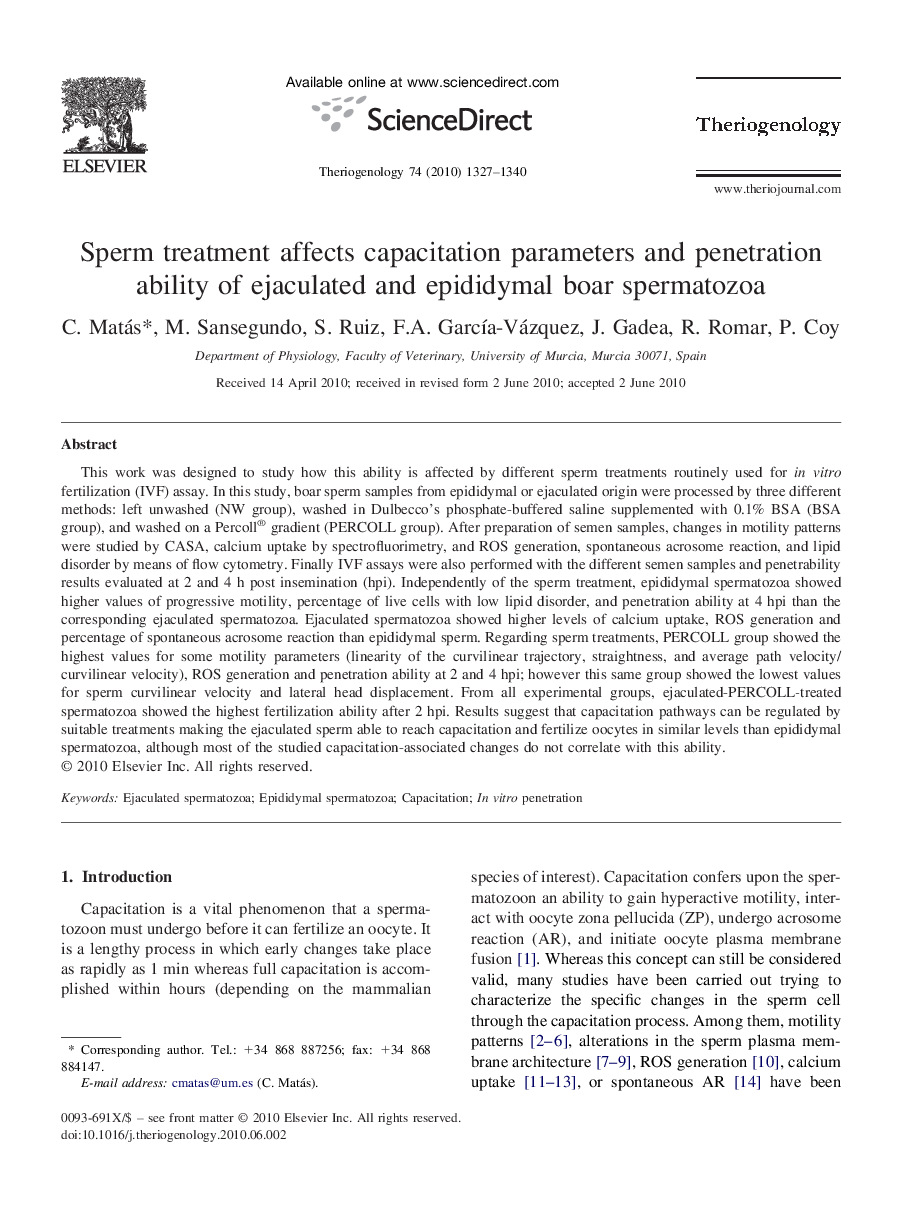| Article ID | Journal | Published Year | Pages | File Type |
|---|---|---|---|---|
| 2097808 | Theriogenology | 2010 | 14 Pages |
This work was designed to study how this ability is affected by different sperm treatments routinely used for in vitro fertilization (IVF) assay. In this study, boar sperm samples from epididymal or ejaculated origin were processed by three different methods: left unwashed (NW group), washed in Dulbecco's phosphate-buffered saline supplemented with 0.1% BSA (BSA group), and washed on a Percoll® gradient (PERCOLL group). After preparation of semen samples, changes in motility patterns were studied by CASA, calcium uptake by spectrofluorimetry, and ROS generation, spontaneous acrosome reaction, and lipid disorder by means of flow cytometry. Finally IVF assays were also performed with the different semen samples and penetrability results evaluated at 2 and 4 h post insemination (hpi). Independently of the sperm treatment, epididymal spermatozoa showed higher values of progressive motility, percentage of live cells with low lipid disorder, and penetration ability at 4 hpi than the corresponding ejaculated spermatozoa. Ejaculated spermatozoa showed higher levels of calcium uptake, ROS generation and percentage of spontaneous acrosome reaction than epididymal sperm. Regarding sperm treatments, PERCOLL group showed the highest values for some motility parameters (linearity of the curvilinear trajectory, straightness, and average path velocity/curvilinear velocity), ROS generation and penetration ability at 2 and 4 hpi; however this same group showed the lowest values for sperm curvilinear velocity and lateral head displacement. From all experimental groups, ejaculated-PERCOLL-treated spermatozoa showed the highest fertilization ability after 2 hpi. Results suggest that capacitation pathways can be regulated by suitable treatments making the ejaculated sperm able to reach capacitation and fertilize oocytes in similar levels than epididymal spermatozoa, although most of the studied capacitation-associated changes do not correlate with this ability.
